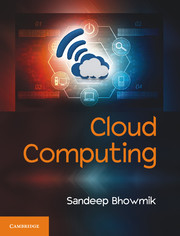Refine search
Actions for selected content:
48468 results in Computer Science
Data-driven surrogate modeling and benchmarking for process equipment
-
- Journal:
- Data-Centric Engineering / Volume 1 / 2020
- Published online by Cambridge University Press:
- 04 September 2020, e7
-
- Article
-
- You have access
- Open access
- HTML
- Export citation
ALGEBRAIC RELIABILITY OF MULTI-STATE k-OUT-OF-n SYSTEMS—CORRIGENDUM
-
- Journal:
- Probability in the Engineering and Informational Sciences / Volume 35 / Issue 4 / October 2021
- Published online by Cambridge University Press:
- 04 September 2020, p. 1005
-
- Article
-
- You have access
- Export citation
Gradient and Harnack-type estimates for PageRank
-
- Journal:
- Network Science / Volume 9 / Issue S1 / October 2021
- Published online by Cambridge University Press:
- 03 September 2020, pp. S4-S22
-
- Article
- Export citation
Extensional constructive real analysis via locators
-
- Journal:
- Mathematical Structures in Computer Science / Volume 31 / Issue 1 / January 2021
- Published online by Cambridge University Press:
- 02 September 2020, pp. 64-88
-
- Article
- Export citation
Single-seed cascades on clustered networks
-
- Journal:
- Network Science / Volume 9 / Issue 1 / March 2021
- Published online by Cambridge University Press:
- 02 September 2020, pp. 59-72
-
- Article
- Export citation
Superbubbles as an empirical characteristic of directed networks
-
- Journal:
- Network Science / Volume 9 / Issue 1 / March 2021
- Published online by Cambridge University Press:
- 01 September 2020, pp. 49-58
-
- Article
- Export citation
Resonance-filtering combo system for continuous wireless charging range coverage
-
- Journal:
- Wireless Power Transfer / Volume 7 / Issue 2 / September 2020
- Published online by Cambridge University Press:
- 19 October 2020, pp. 116-125
- Print publication:
- September 2020
-
- Article
- Export citation

Cloud Computing
-
- Published online:
- 31 August 2020
- Print publication:
- 17 April 2017
-
- Textbook
- Export citation
Dirac’s theorem for random regular graphs
- Part of
-
- Journal:
- Combinatorics, Probability and Computing / Volume 30 / Issue 1 / January 2021
- Published online by Cambridge University Press:
- 28 August 2020, pp. 17-36
-
- Article
- Export citation
Resilience of the rank of random matrices
- Part of
-
- Journal:
- Combinatorics, Probability and Computing / Volume 30 / Issue 2 / March 2021
- Published online by Cambridge University Press:
- 28 August 2020, pp. 163-174
-
- Article
- Export citation
Infection to Recovery; COVID-19 in Pakistan and its Implications
-
- Journal:
- Experimental Results / Volume 1 / 2020
- Published online by Cambridge University Press:
- 27 August 2020, e32
-
- Article
-
- You have access
- Open access
- HTML
- Export citation
Computational approach to identify potential antileishmanial activity of reported inhibitor, E5700 and two natural alkaloids against Leishmania donovani Squalene Synthase
-
- Journal:
- Experimental Results / Volume 1 / 2020
- Published online by Cambridge University Press:
- 27 August 2020, e31
-
- Article
-
- You have access
- Open access
- HTML
- Export citation
Use of navigation GPSs in small topographical surveying – ERRATUM
-
- Journal:
- Experimental Results / Volume 1 / 2020
- Published online by Cambridge University Press:
- 27 August 2020, e33
-
- Article
-
- You have access
- Open access
- HTML
- Export citation
Runtime verification and validation of functional reactive systems
- Part of
-
- Journal:
- Journal of Functional Programming / Volume 30 / 2020
- Published online by Cambridge University Press:
- 26 August 2020, e28
-
- Article
-
- You have access
- Export citation
THE POTENTIAL IN FREGE’S THEOREM
- Part of
-
- Journal:
- The Review of Symbolic Logic / Volume 16 / Issue 2 / June 2023
- Published online by Cambridge University Press:
- 25 August 2020, pp. 553-577
- Print publication:
- June 2023
-
- Article
- Export citation
STOCHASTIC ORDERING OF LIFETIMES OF PARALLEL AND SERIES SYSTEMS COMPRISING HETEROGENEOUS DEPENDENT COMPONENTS WITH GENERALIZED BIRNBAUM-SAUNDERS DISTRIBUTIONS
-
- Journal:
- Probability in the Engineering and Informational Sciences / Volume 36 / Issue 1 / January 2022
- Published online by Cambridge University Press:
- 25 August 2020, pp. 49-65
-
- Article
- Export citation







